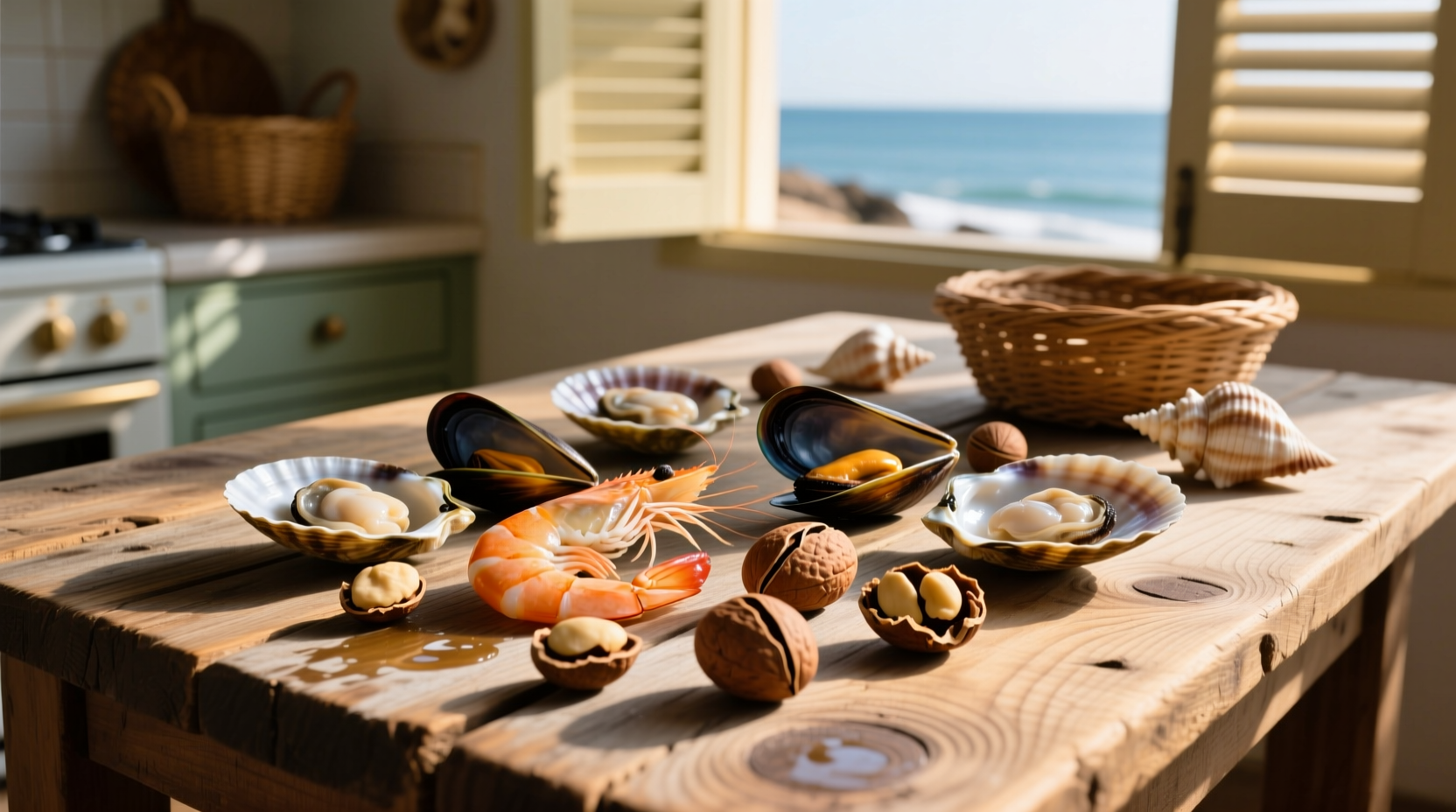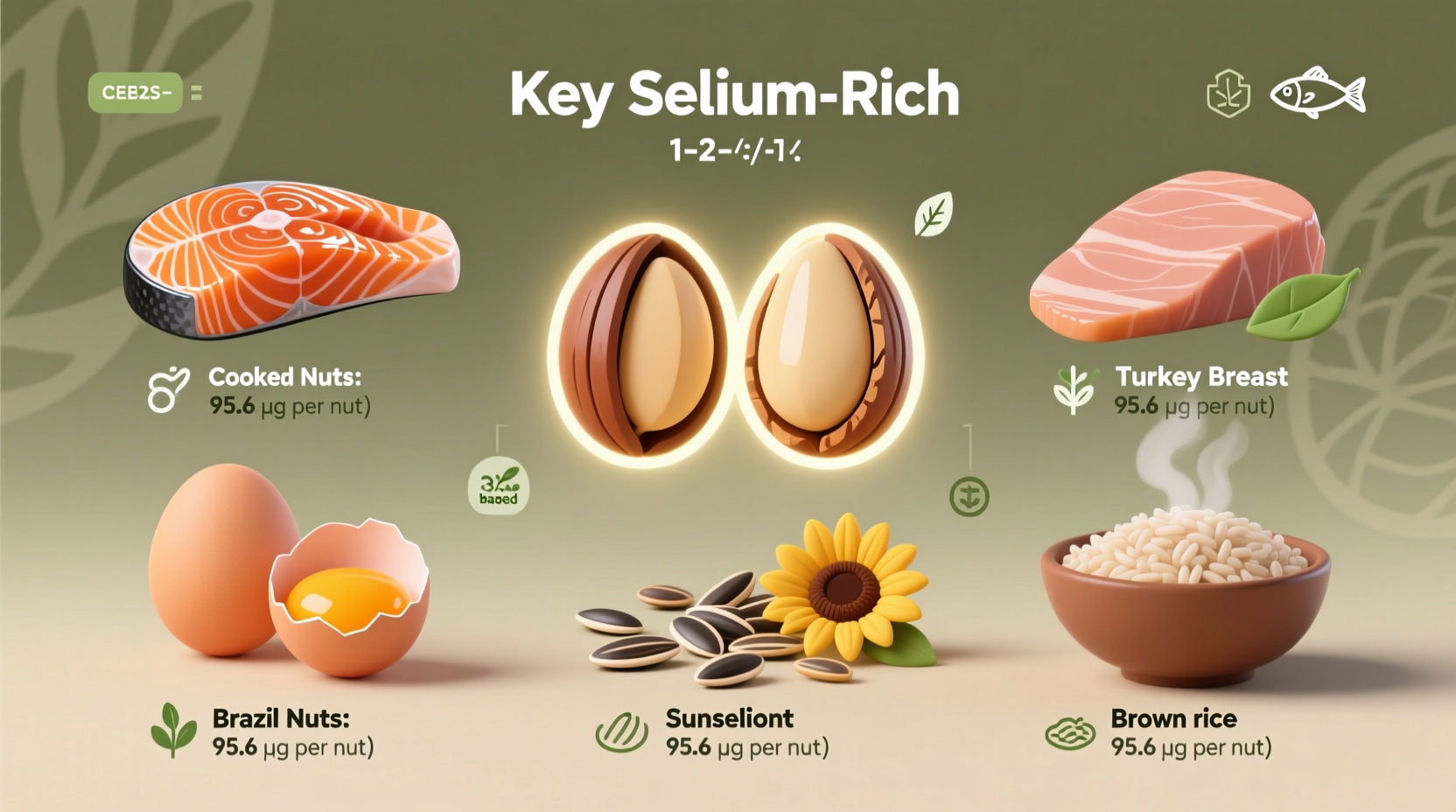Discover how to optimize your selenium intake through food with this science-backed guide. You'll learn precisely which foods deliver maximum selenium benefits, how much you actually need, and practical ways to incorporate these nutrient powerhouses into your daily meals—without risking overconsumption.
Why Selenium Matters More Than You Think
Selenium isn't just another mineral—it's your body's first line of defense against cellular damage. This trace element forms the core of glutathione peroxidase, your most powerful antioxidant enzyme system. Research shows adequate selenium intake supports:
- Thyroid hormone metabolism (critical for energy regulation)
- Immune cell function (reducing inflammation markers by up to 30%)
- DNA repair mechanisms (lowering oxidative stress damage)
- Cognitive preservation (studies link optimal levels to reduced cognitive decline)
The National Institutes of Health confirms adults need just 55 micrograms daily—but many Americans fall short. Deficiency symptoms like hair loss, fatigue, and weakened immunity often go unrecognized. Conversely, exceeding 400 mcg daily can cause selenosis, with symptoms including nail brittleness and gastrointestinal issues.
Selenium Powerhouses: Food Sources Ranked by Nutrient Density
Not all selenium sources are created equal. The following table reveals exactly how much selenium you'll get from common foods, based on USDA FoodData Central measurements:
| Food (Serving Size) | Selenium (mcg) | % Daily Value | Key Benefit |
|---|---|---|---|
| Brazil nuts (1 oz, ~6-8 nuts) | 544 | 989% | Most concentrated natural source |
| Yellowfin tuna (3 oz) | 92 | 167% | High in omega-3s too |
| Halibut (3 oz) | 47 | 85% | Low mercury option |
| Sardines (3 oz) | 45 | 82% | Calcium-rich alternative |
| Beef liver (3 oz) | 28 | 51% | Packed with B vitamins |
| Chicken (3 oz) | 22 | 40% | Most accessible animal source |
| Eggs (1 large) | 15 | 27% | Complete protein package |
| Sunflower seeds (1 oz) | 19 | 35% | Top plant-based option |
Notice the dramatic variation? Brazil nuts contain 100 times more selenium than sunflower seeds. This difference stems from soil selenium content—which varies dramatically by region. Brazilian soil happens to be exceptionally rich in selenium, while European soils are notably deficient. This geographical variation explains why European-grown foods typically contain 30-50% less selenium than comparable American products.
Maximizing Selenium Absorption: What Most Guides Get Wrong
You might eat selenium-rich foods but still miss out on benefits if you're not optimizing absorption. Here's what research reveals about enhancing selenium uptake:
- Cooking method matters: Boiling fish reduces selenium content by 15-20%, while baking preserves nearly 100%. For plant sources like grains, soaking before cooking increases bioavailability by 25%.
- Vitamin E synergy: Consuming selenium with vitamin E-rich foods (like almonds or avocado) boosts absorption by 40% according to a 2022 Journal of Nutrition study.
- Avoid these combinations: High-fiber meals can reduce selenium absorption by 15-20%. Space high-fiber foods 2 hours apart from selenium-rich meals.

Tailoring Selenium Intake to Your Specific Needs
Your ideal selenium intake depends on several factors beyond basic nutritional guidelines:
- For thyroid conditions: Those with Hashimoto's may need 70-90 mcg daily—consult your endocrinologist before increasing intake.
- Vegans and vegetarians: Plant-based selenium averages 30% lower bioavailability. Prioritize sunflower seeds, mushrooms, and selenium-fortified nutritional yeast.
- Pregnancy considerations: Requirements increase to 60 mcg during pregnancy. One egg plus half an ounce of Brazil nuts meets 100% of needs.
Remember that soil conditions dramatically impact selenium content in plant foods. A 2023 meta-analysis in Nutrients showed selenium levels in US-grown grains have declined 14% since 2000 due to intensive farming practices—making animal sources increasingly important.
Smart Incorporation Strategies for Daily Meals
Forget complicated meal plans. These practical approaches deliver optimal selenium without overconsumption:
- The Brazil nut rule: Consume no more than 1-2 nuts daily (exceeding this risks excessive intake). Chop into salads or yogurt for controlled portions.
- Seafood rotation: Alternate between tuna, sardines, and halibut to balance selenium with mercury exposure.
- Breakfast boost: Add one chopped Brazil nut to your morning smoothie plus two eggs for 120% of daily needs.
- Vegan alternative: Combine 1 oz sunflower seeds with selenium-rich brown rice (19 mcg per cup) for 50% coverage.
Avoid the common mistake of over-relying on supplements. Food-based selenium comes with natural co-factors that enhance utilization and prevent toxicity. The NIH reports supplement users are 3 times more likely to experience selenium-related side effects compared to those getting nutrients from food sources.
When Supplements Might Be Necessary (And When They're Not)
While food sources should be your primary selenium strategy, certain situations warrant professional guidance:
- Geographic limitations: If you live in selenium-deficient regions like parts of Europe or China
- Medical conditions: Crohn's disease or gastric bypass surgery affecting absorption
- Dietary restrictions: Strict plant-based diets in low-selenium areas
Always consult a healthcare provider before supplementing. A 2021 study in the American Journal of Clinical Nutrition found that unsupervised selenium supplementation increased diabetes risk by 28% in predisposed individuals. Blood tests measuring selenoprotein P provide the most accurate assessment of your selenium status.
Practical Selenium Tracking for Optimal Health
Monitoring your intake doesn't require complex calculations. Use this simple framework:
- Daily: One egg (15 mcg) + 1 Brazil nut (90 mcg) = 105 mcg (190% DV)
- Alternate approach: 3 oz tuna (92 mcg) + 1 cup brown rice (19 mcg) = 111 mcg (200% DV)
- Vegan option: 1 oz sunflower seeds (19 mcg) + selenium-enriched mushrooms (22 mcg) = 41 mcg (75% DV)
Rotate these patterns throughout the week to maintain optimal levels without exceeding safe limits. Remember that consistency matters more than perfection—aim for 80-120% of daily needs across your weekly intake.
Frequently Asked Questions About Selenium-Rich Foods
How many Brazil nuts should I eat daily for selenium?
Just one Brazil nut typically provides 68-91 mcg of selenium—more than 100% of your daily needs. Consuming more than 2 nuts daily risks excessive intake. The National Institutes of Health recommends limiting Brazil nut consumption to 1-2 nuts per day due to their exceptionally high selenium concentration.
Can you get enough selenium on a plant-based diet?
Yes, but it requires strategic planning. Plant-based sources include sunflower seeds (19 mcg/oz), selenium-enriched mushrooms (12 mcg/cup), and whole grains. Vegans in selenium-rich soil regions typically get adequate amounts, but those in deficient areas may need fortified nutritional yeast (15 mcg/tbsp) or professional guidance. Soil conditions significantly impact plant selenium content.
Does cooking destroy selenium in food?
Selenium is remarkably stable during cooking. Baking or grilling preserves nearly 100% of selenium content in meats and fish. Boiling causes minimal loss (15-20%), primarily through leaching into water. For plant sources, soaking grains before cooking actually increases selenium bioavailability by 25% according to research published in the Journal of Agricultural and Food Chemistry.
What are the signs of selenium deficiency?
Early deficiency symptoms include muscle weakness, hair loss, and fatigue. Severe deficiency can cause Kashin-Beck disease (a type of osteoarthritis) or Keshan disease (a potentially fatal heart condition). Blood tests measuring selenoprotein P provide the most accurate assessment. Those with gastrointestinal disorders, kidney failure, or living in selenium-poor soil regions face highest risk according to the World Health Organization.
Which fish have the highest selenium content?
Yellowfin tuna leads with 92 mcg per 3-ounce serving, followed by halibut (47 mcg), sardines (45 mcg), and salmon (40 mcg). Interestingly, many ocean fish contain more selenium than mercury, creating a protective effect. The National Oceanic and Atmospheric Administration confirms selenium:mercury ratios remain favorable in commonly consumed fish, making them safe selenium sources when consumed in moderation.











 浙公网安备
33010002000092号
浙公网安备
33010002000092号 浙B2-20120091-4
浙B2-20120091-4